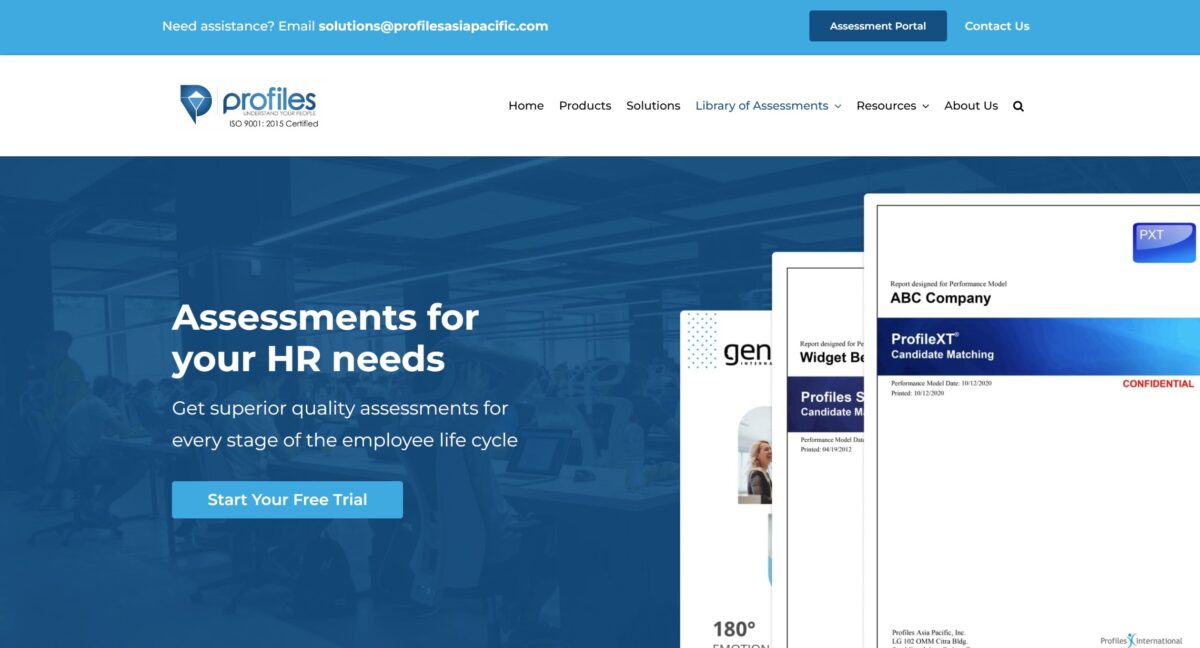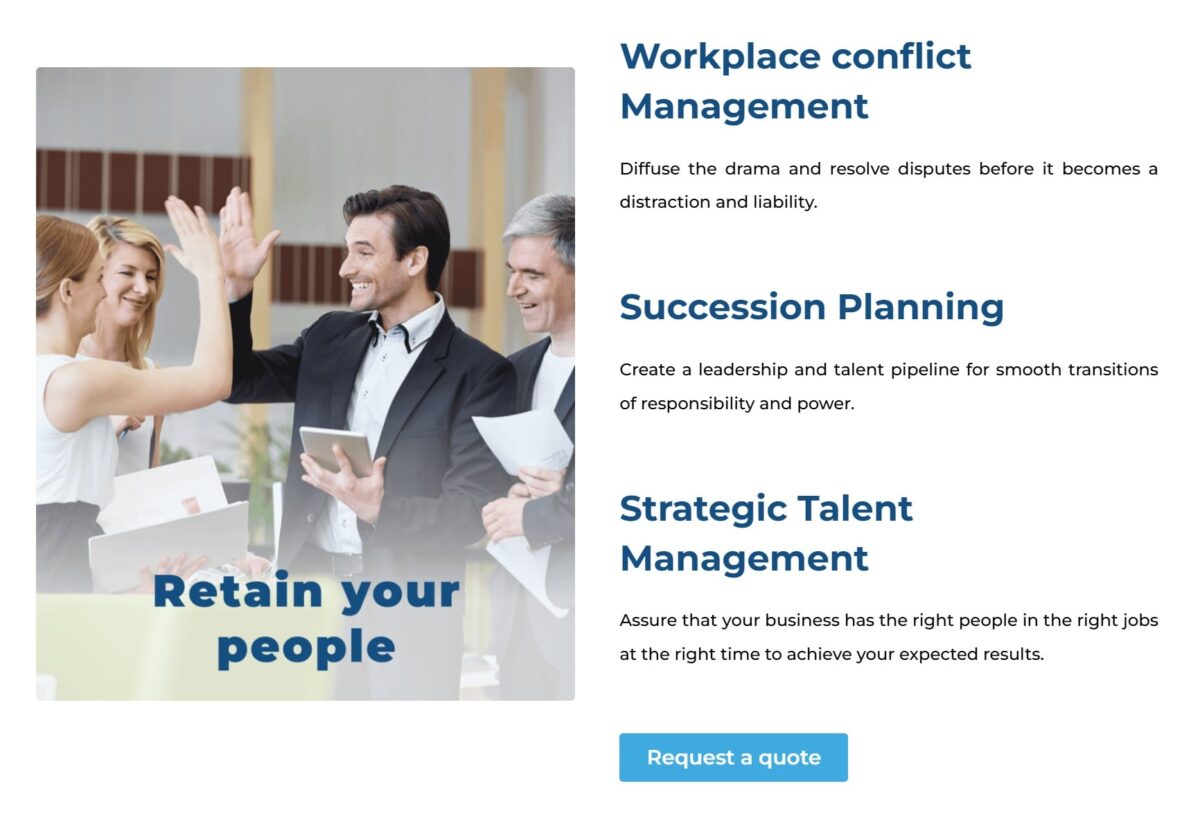The ability to match the right person with the right role is critical, as it helps maintain productivity, job satisfaction, and organizational success.
Determining job fit, meanwhile, ensures that employees aren’t just capable of carrying out their responsibilities, but also more likely to thrive in them. Though it may be challenging, we’ll discuss an instrument that eases the overall process: a job fit assessment.
In this article, we’ll guide you through its complexities and show you how this tool helps your company attract the right talent and improve its performance.
What is job fit?
Simply put, job fit refers to how well an employee’s skills, experience, and personality align with a role’s requirements and an organization’s culture.
It can either be a positive or negative match, depending on the person’s synergy with your organization. However, if someone is well-suited to their position, they’re more likely to engage, excel, and stay with your company for the long-term.
Factors that affect job fit
Several variables influence how well an individual fits a particular job, but understanding these dimensions can help you determine their compatibility:
- Job requirements: Does the candidate possess the knowledge and abilities needed to perform their tasks well?
- Experience: Has their background and work history prepared them for their role?
- Personal values: Do the applicant’s standards and principles align with their work environment, namely their colleagues, as well as your company and customers?
- Organizational culture: Do the person’s personality, work style, and behaviors align with the company’s culture and the job’s duties, or do they require guidance to properly adapt?
- Career aspirations: Do the individual’s personal and professional goals match the organization’s objectives and what the role can offer?
- Work-life balance: Every employee must strike an equilibrium between their professional and personal commitments. How compatible are the job’s demands with the candidate’s responsibilities outside of it?
The benefits of hiring for job fit
Determining job fit and hiring for it allows your organization to enjoy the following advantages:
Higher job satisfaction and employee retention
When an individual feels like their job matches their skills and interests, they’ll exhibit higher levels of engagement. Such personnel, meanwhile, will more likely be content with their roles, as they’re able to work towards their aspirations.
Since the people you hire are also suitable for the open position’s duties and your company’s culture, employee retention increases as well.
Enhanced productivity
Candidates that match their roles will likely hit the ground running and be efficient employees from the start.
These productive individuals can greatly benefit your organization’s overall performance, seeing how the top 20% of its workers will typically account for 80% of its output. Since only select personnel actually contribute to your company’s goals, it’s critical that you find the best ones.
Lower costs
Employees whose skills and behaviors align with your company’s open role and culture will require less training and resources to flourish. This is especially helpful, considering how learning and development initiatives can cost organizations up to $1,252 per employee.
Better profitability
Since new hires will properly align with their work and environment and require fewer assets to do more, your company’s bottom line gains a significant boost. The added productivity from these engaged employees helps as well, with statistics indicating that:
- Productive businesses enjoy 30% to 50% higher operating margins compared to their less productive counterparts
- Higher productivity levels from engaged workers can bring your organization a 21% increase in profitability
Improved team dynamics
Individuals that seamlessly fit into their roles and teams promote better collaboration and communication, as developing synergy becomes easier.
With many like-minded individuals gathered in one place, fostering a positive environment and desirable workplace becomes effortless as well.
What is a job fit assessment?
Since you now have a basic understanding of what job fit is and the benefits that it can deliver, we’ll give you a quick look at what an assessment entails.
Basically, it’s a systematic process that measures how well a candidate or existing employee matches a specific role within your company. It’s comprised of a combination of these instruments:
- Skills tests: These evaluate technical and job-specific skills, such as one’s proficiency with niche software or tools. It provides a glimpse of their expertise, letting you determine if their hard skills need development.
- Personality assessments: These tools measure traits and behaviors relevant to the open role and your company’s culture. They offer a more rounded representation of a candidate’s competencies and working style.
- Interviews: Whether structured or unstructured, these conversations explore a candidate’s fit. For example, behavioral interviews question how one handled certain past situations, showcasing their problem solving and leadership skills.
- Work samples: These are straightforward, as they only involve candidates accomplishing tasks or projects simulating their future job responsibilities. This, in turn, gauges whether they can perform well.
- Reference checks: These are standard for every recruitment and hiring process. Here, you solicit feedback from previous employers or colleagues about the candidate’s past conduct and performance.
How to conduct a job fit assessment
You now know the core concepts of job fit assessments. To help you conduct an effective one, here’s a quick, step-by-step guide:
Step 1: Clearly define job requirements
First, clearly outline the skills, experience, and personal attributes needed for the role. To do this properly:
- Conduct a job analysis: Review the job description and understand the core responsibilities. Gather insights from employees who currently hold the role, as well as their team members and supervisors, to understand its challenges as well.
- Identify key competencies: Determine the hard (e.g., software proficiency, industry-specific knowledge) and soft (e.g., emotional intelligence, problem-solving) skills needed to perform the job well.
- Determine cultural fit: Think about the company’s values and culture, then consider the personality traits and work styles that align with them. For instance, is the role suited for someone who thrives in fast-paced environments?
- Prioritize requirements: Distinguish between must-have and nice-to-have qualifications. For example, being a certified public accountant (CPA) is a must-have, but knowledge in certain accounting tools is a nice-to-have since it can be taught on-the-job.
Step 2: Create or select assessment tools
After determining the role’s essentials, choose reliable evaluation tools based on the established requirements. Your selection process should include a mix of these steps:
- Select skills tests: Use ones that measure job-specific, technical skills – like coding for developers – and ensure they simulate real job tasks.
- Choose personality evaluations: Select assessments that evaluate an individual’s traits and behaviors. Take Profiles Asia Pacific’s Myers-Briggs Type Indicator® (MBTI®) and Emotional Quotient Inventory (EQ-i 2.0®) as examples.
- Design work simulations or case studies: Implement tasks or projects that mimic job responsibilities. For instance, people can role-play customer service scenarios and challenge the key skills needed for them.
- Gather 360-degree feedback: This involves forming an accurate representation of the total employee by collecting insights from employers and colleagues. Our CheckPoint 360° Feedback System does the same.
When choosing, make fairness a priority as well. Ensure that the assessments are reliable, valid, and non-discriminatory.
Step 3: Develop structured interviews
Next, prepare interviews that systematically assess the candidate’s technical and cultural fit. In this step, refine your questions and include:
- Competency-based questions: Explore the candidate’s experience and skills. For instance, let them describe instances where they led successful initiatives. Use the STAR method (Situation, Task, Action, Result) to gather detailed responses.
- Behavioral and situational questions: As we previously mentioned, these assess how candidates handle specific work situations. So, focus on scenarios that reflect common challenges, like how an individual would manage team conflict.
- Cultural fit questions: Ask about the applicant’s values, motivations, and preferred work settings to gauge whether they align with the company’s. For instance, “What type of work environment do you thrive in?”
Once these are accounted for, standardize your interview process to ensure fairness and consistency. Use the same questions for every candidate, but involve multiple interviewers to gather diverse perspectives.
Step 4: Administer assessments
Now that your preparations are complete, it’s time to conduct the assessments. To reiterate, conduct them in a standardized fashion to ensure fairness, consistency, and accuracy. Do the following as well:
- Schedule them in advance: Ensure a seamless process by arranging timelines for tests and interviews early. All the involved parties should be available and prepared.
- Communicate clearly: To avoid confusion, brief candidates about the process and the organization’s expectations. Provide detailed guidelines for each assessment, like their time limits and formats, and provide the resources necessary to complete tasks.
- Create a conducive environment: When conducting in-person assessments, provide distraction-free and comfortable settings or venues. For virtual evaluations, use reliable tools or platforms.
- Monitor and support: To maintain a smooth candidate experience, make yourself available for any applicant questions or concerns. Provide technical support during online assessments as well.
Step 5: Analyze results
Once the evaluations are finished, scrutinize your gathered data to determine each candidate’s strengths, weaknesses, and suitability relative to the job requirements. These can help you identify individual development areas as well.

Each of our best-in-class assessments, for example, follow distinct scoring systems to compare applicants objectively. They provide reports as well, allowing you to understand each candidate’s profile and measure them against your open role’s qualifications.

If you want to learn more, or maximize our offering, just reach out. We offer strategic talent management solutions as well.
Step 6: Make informed decisions
Once you’ve properly sifted through the assessment results, select the best candidate. The decisions should follow after considering their job fit and potential for growth within your company. Before finalizing anything, remember to:
- Compare candidates: Rank them based on their results and use a decision matrix to select the best applicant.
- Consult existing personnel: Discuss your findings with hiring managers, as well as the applicant’s potential team members and supervisors. Ensure their perspectives are considered, as most of them will work with the candidate.
- Balance immediate fit and potential: Future hires shouldn’t just be evaluated for their current fit, but also their potential. So, consider how well they might adapt to future role changes or organizational developments.
- Document the decision-making process: To ensure transparency and fairness, keep detailed records of how the hiring decision was made. Use them to refine your job fit assessment process or for future reference.
Step 7: Provide feedback
Your final step involves offering constructive feedback to every candidate, regardless of the outcome. To properly provide it:
- Be meticulous: Make your input specific, actionable, and respectful. Summarize the applicant’s key strengths, weaknesses, and development areas in an easy-to-understand fashion.
- Be timely: Promptly inform candidates of the job fit assessment’s outcome. Don’t make them wait and waste their time, as those who miss the mark will need to find other opportunities.
- Suggest areas of improvement: For unsuccessful candidates, point out development areas, as well as upskilling and reskilling opportunities, so that they can improve and secure future roles.
- End on a high note: Thank all candidates for their time and effort. Encourage those who failed to apply for future openings as well, especially if they’re a better fit for other, currently unavailable roles.
This step will entail some extra effort. However, this not only helps applicants understand their strengths and weaknesses, but it also maintains positive relations with unsuccessful individuals.
Doing so not only leaves a stellar impression, but also establishes good employer branding and healthy connections with potential future candidates.
Best practices for a successful job fit assessment
At this point, you should be well-equipped to perform job fit assessments. To ensure your efforts to evaluate applicants are at a high level, we’ll cap things off with some best practices:
Use multiple assessment methods
Focus on conducting a comprehensive evaluation. Although skills tests, interviews, and background checks are the norm, use multiple tools to form a well-rounded picture of an individual.
Cover all your bases and gauge their behaviors, personalities, cognitive abilities, interests and the like.
Be transparent
Clearly outline your job fit assessment process and maintain communications at every stage. Since candidates say an accurate depiction of the hiring process would significantly improve their experience, this prevents confusion and encourages them to pursue their job application.
In fact, despite 76% of employers feeling they do a good job of setting expectations from the start, only 47% of job seekers agree.
Ensure fairness
Use objective, standardized scoring systems to minimize biases in the assessment process. Also, be open about your criteria, as this helps prevent confusion amongst your candidates. Make sure your procedures align with industry best practices and regulations as well.
Involve multiple stakeholders
Despite the accuracy of your results, the hiring decision shouldn’t rest on you alone. Seek the input of hiring managers, as well as the applicant’s future team members and managers.
First-hand insights from those who’ll work directly with the new hire is invaluable, as they’ll be the ones interacting on a day-to-day basis. They’ll observe details that you may overlook as well, so having diverse perspectives helps.
Continuously improve
Finding people with skills, goals, and values that match your organization isn’t a one-time endeavor. It’s an ongoing process that must be continually improved. To keep your job fit assessment practices up-to-date, do the following:
Gather applicant feedback
The candidate experience can make or break your efforts, as a bad one can deter up to 63% of job seekers from accepting your job offer, despite them being a good fit.
To ensure a seamless assessment process, solicit feedback from people who go through it themselves. Through their input, you can identify flaws in your system and make the necessary improvements.
Keep up with technology
Technology develops at a rapid pace and can disrupt industries at any time. Such major shifts, meanwhile, can render roles and skill sets obsolete, but give rise to new ones.
Think of how the adoption of artificial intelligence (AI), machine learning, and automation have transformed businesses and brought forth the need for proficiency in tools that utilize them.
As such, new assessment methodologies and baselines will also emerge, making it critical that you keep up.
Wrapping up—Use job fit assessments to build an aligned and productive workforce
Conducting a job fit assessment is an invaluable step in the hiring process. It not only helps you select qualified candidates, but also identify those likely to thrive within your organization.
By understanding the factors that influence job fit, using a structured assessment approach, and following best practices, you can bolster your recruitment and hiring strategies, build stronger teams, and drive long-term company success.
Published: December 4, 2014
Updated: June 26, 2024




